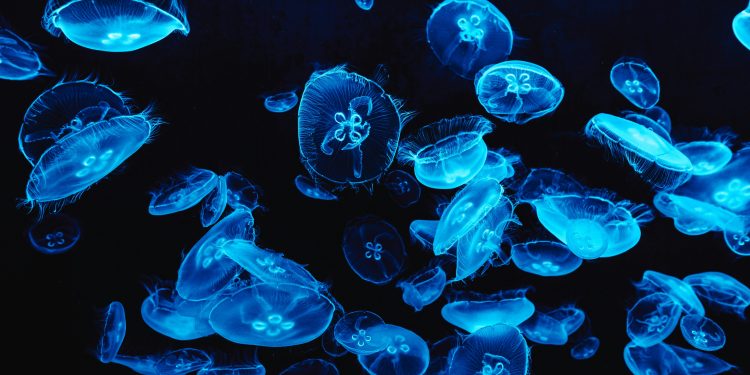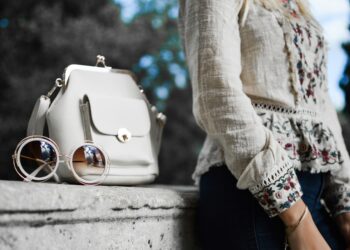Perhaps, one of the most notable highlights from the Iris van Herpen Fall/Winter 2025 haute couture show was when Dutch dancer, Madoka Kariya emerged on the runway, with her body swathed in liquid silk that reacted to laser projections like bioluminescent plankton being disturbed by a diver’s touch. Let’s be clear on one thing though, this was no ordinary fashion show. This was a whole new feat, —a manifesto if you’d like— on what fashion could be when biology, technology, and poetry collide.

The Living Dress That Stole Paris
The show’s masterpiece came halfway through the showcase. It was a diaphanous gown embedded with 125 million living Pyrocystis lunula algae, their cyan glow pulsating gently like a heartbeat.
Suspended in a nutrient-rich hydrogel developed with bio-designer Chris Bellamy, the microorganisms required precise temperature control to survive, making this perhaps the first couture garment with its own ecosystem.
“It’s a conversation starter about our dependence on fragile systems,” van Herpen explained post-show. “The ocean keeps us alive, yet we know so little about it. We need to care for what cares for us.”
Though the dress will likely never be worn outside a laboratory (as the algae require constant 22°C conditions), its presence emphasized van Herpen’s radical thesis: “Could clothing evolve from object to organism?” Critics noted the irony—an ephemeral work of art critiquing humanity’s ephemeral regard for nature.
Where other designers choose trends, van Herpen chases transformations. For FW25, she collaborated with Japanese biomaterial company Spiber to create wedding dresses from fermented sugarcane protein—a material that biodegrades in months, not millennia. The textured surfaces resembled everything from octopus suckers to crumpled Pringles chips, challenging conventional notions of bridal elegance.

Elsewhere, her “Air Fabric” gowns—weightless constructions of resin-coated silk suspended on crescent-shaped boning—appeared to float around models like jellyfish tentacles. One particularly dreamlike piece was crafted from recycled fishing nets, and it undulated with each step as if moved by phantom currents.
The Runway as Oceanic Theatre
True to form, van Herpen turned her haute couture presentation into multisensory theatre:
- For Scent: Perfumer Francis Kurkdjian created a bespoke marine fragrance with notes of salt, ozone, and something unsettlingly primal—like the smell of wet stone in a tidal cave.
- Soundwise: A composition blending whale songs with electronic glitches played as models emerged from a tunnel of watery light projections.
- As regards movement: Dancer Madoka Kariya’s opening performance, inspired by Loïe Fuller’s 1890s Serpentine Dance, used lasers to visualize the invisible forces connecting humans to aquatic ecosystems.
Why This Collection Matters Now
In an industry obsessed with being the viral hype of the moment, van Herpen’s work remains stubbornly slow. As one of couture’s last independent houses (she refuses LVMH buyouts), she answers only to her own direction (one currently pointing toward interspecies collaboration).
“The future isn’t about humans dominating nature,” she notably said backstage, adjusting a gown made from lab-grown spider silk. “It’s about ‘sympoiesis’—making things together.” The term, borrowed from biologist Donna Haraway, became the collection’s rallying motto. Where other designers use sustainability as a marketing bullet point, van Herpen rather embedded it in her very process as was seen in her zero-waste patterning (every scrap was reused), blockchain-tracked materials (clients can trace a dress’s biomaterials to their origins) and coral restoration partnerships (5% of proceeds fund reef rehabilitation).
Meanwhile, front-row regulars like Björk (a longtime muse) and Tilda Swinton nodded approvingly as the models floated by—proof that van Herpen’s clientele values conceptual rigor over Instagram bait. Still, the collection had its viral moments: TikTok exploded over a dress that “melted” from solid resin into liquid-like folds as the model moved, while Twitter debated whether the algae gown counted as vegan.

Conclusion
In an era of burnout and overconsumption, her work offers a radical alternative: What if every garment asked us to think deeper, move slower, care more?


















